Circulation: A Critical Issue — Conceptual Clarity & Ease of Wayfinding

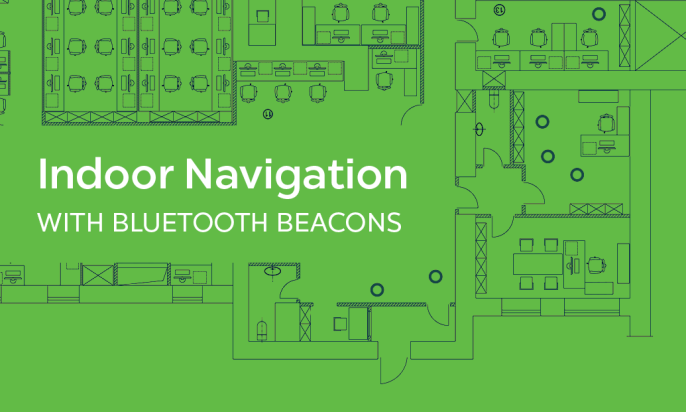 ‘Circulation’ is defined by the Merriam-Webster’s Collegiate dictionary as: “orderly movement through a circuit; esp: the movement of blood through the vessels of the body influenced by the pumping action of the heart.”
‘Circulation’ is defined by the Merriam-Webster’s Collegiate dictionary as: “orderly movement through a circuit; esp: the movement of blood through the vessels of the body influenced by the pumping action of the heart.”
So we have our medical analogy, though a hospital is often compared to a small city, I’ve never heard or read a comparison to the human body. We do, however speak of the ‘pulse’ of a city, and it’s ‘major arteries’. But we are wandering; let us get back on track.
In the above definition, ‘orderly movement through a circuit’, the word we should pick up and focus on is ‘orderly’. It implies purpose, and purpose implies design. We are going to talk about the importance of the design of circulation in a healthcare facility.
Hospitals, like the small cities they are likened to, contain main circulation routes often described as hospital streets. The way in which the different parts of the hospital are assembled, as a coherent whole but with the parts differentiated, make for analogies with urban design; the way in which traffic moves, and the routes that are taken by mechanical and electrical services are fundamental generators of the plan.
In a vertically stacked hospital, which could also be called a functionally stratified hospital, almost always the inpatient areas are placed on the upper floors, to allow for a more pleasant, naturally lit environment. The planning grid for the hospital is determined by the layout of these inpatient floors. Another important planning feature, the vertical circulation core, is also to some extent located within the building by the layout of the inpatient floors. Usually, in vertically organized hospitals we design “from the top down”, that is, we design the inpatient floors first. What we actually do is during the layout of the inpatient floors, we provisionally decide on a position for the vertical circulation core and other Staircases that may be required, many times by the local building codes. This location, however, is to be checked for it’s design impact on the lower floors containing the diagnostic / therapeutic / interventional departments.
The pattern of circulation conceptualized for the hospital under design will be considerably impacted by the location(s) of the vertical circulation core(s).
It’s something like all roads leading to Rome(s). The vertical circulation core is the center, the focus of all the major circulation paths of the hospital. An attempt can be made through design to minimize vertical transportation by siting (for example) all surgical beds, operating theatres and the intensive care unit on the same floor. This design approach may be used as a justification to reduce the number of elevators, or the width of the staircases, but in no way does this mean that the core can be located more casually by the designer.
Avoidance of dependence on lifts is particularly important in places where maintenance and availability of spare parts is unreliable; long waits for lifts are a major cause of inefficiency and frustration to hospital users — more of a problem the taller the building is.
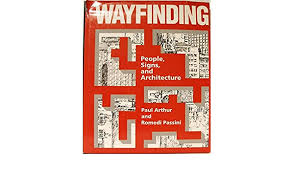
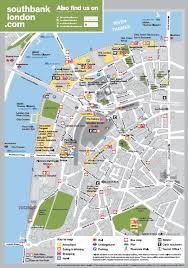 It is important that patients, visitors and staff are enabled to orient themselves while moving through the hospital by providing windows in corridors to enable them to look out and to allow natural light in, important in alleviating the tedium of long corridors. If the site enables them, courtyards are also an excellent means to this end.
It is important that patients, visitors and staff are enabled to orient themselves while moving through the hospital by providing windows in corridors to enable them to look out and to allow natural light in, important in alleviating the tedium of long corridors. If the site enables them, courtyards are also an excellent means to this end.
As such there is no easily available prescription for the way the circulation pattern for a healthcare facility should be. The qualities it should possess, however, I will try to enumerate:
1. It should have conceptual clarity. By this I mean it should be designed with purpose, and should not be leftover space or squeezed into the gaps between other areas. Geometry can be a recourse, but it should work with other planning imperatives, and junctions should be uniquely treated to avoid confusion over which corner of the hexagon (for example) you have reached.
2. It should not be boring. Try to make walking from one place to another interesting, modulate those corridors, color them differently, hang artwork along the way. Niches, outside views, courtyards, all these will help.
3. It should enable wayfinding. In combination with well-designed signage and maybe supergraphics, people should be able to find their way to their destination with ease. Color- coding for floors or departments is sometimes used.
4. They should be wide enough to handle anticipated traffic. Stretcher traffic needs 8’-0” width of corridor for easy movement (turning). 7’-0” will work, but use 8-0” if you can. Corridors between Operation Theaters make sense even with 10’-0″ width. There may be a lot of stuff parked along the sides, despite instructions to OT staff to the contrary.
5. They should be indirectly lit. Patients on stretchers get to look at the ceilings. The sign put up by the traffic police at the end of Marine Drive in Mumbai says, “Drive carefully. Hospital ceilings are boring.” While not advocating rash driving, we would advocate making the ceilings interesting.
Shown above is a nightmarish example of clarity in circulation layout at a hospital in Fresno, California. Hopefully neither of us will ever need to visit a patient who is a loved one in this hospital, for it is in this tense and anxious state that clarity in circulation paths is most welcome.
In tense and anxious moments, there is another ‘path’ that can be of help, and that is the path of the Tao. It is a form of thought founded in the same period as Confucianism, by a thinker often known as Lao Tzu or “Old Master’. The basis of the Tao is a form of reality that is unnamable. The funda is that the nature of reality is unaffected by our ways of trying to grasp it, and although we may use concepts to make sense of that reality, we should be aware that reality is completely undifferentiated. As function the Tao advocates wei wu-wei, which is the avoidance of contrived action, especially action brought about through attempting to achieve an end.

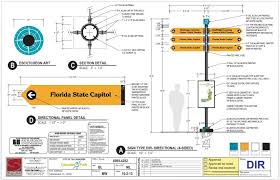 It is not so much what we do as the way we do it.
It is not so much what we do as the way we do it.
A Chinese sage, Zhuangzi, best known for a book of the same name, has provided a particularly clear account of Taoism, illustrated by some delightful images. There is the famous story of how he dreamt he was a butterfly, and when he woke he wondered whether he was Zhuangzi dreaming he was a butterfly, or a butterfly dreaming he was Zhuangzi.
He goes on to say what the sage needs to do is first acquire knowledge and then set out to forget it. (This has some resonance with the reading of this book to gain funda on healthcare architecture, and then regurgitating that funda, as mentioned earlier, being the proper way to learn anything. The important bits leave their traces behind, right?) Zhuangzi goes on to say that what sages need to recover is the point of view of children and the ignorant. (Spontaneity being all-important, | guess?)
All he hopes for will happen in society is that each individual will achieve the level of happiness appropriate to him or her, through following the natural path for that individual.
We can only conclude that if Zhuangzi were to find himself in the New Medical Center at Fresno California, at the Outpatient entrance, trying to find the MRI to get a full body scan done, the Tao (or ‘Path’) to his goal would be unnatural, and he may find it difficult to achieve the level of happiness appropriate to him. The signage in English and Spanish would be Greek to this Chinese sage. (Excuse me, no racial slurs intended, some of my best friends would speak Spanish if they only could.)
Having been an Indian in California, I have been on the receiving end of English slurs. Peace. Let us return to discussing circulation paths in healthcare facilities, in India, for a change.
Some of the hospitals currently existing in India have been provided with ramps in addition to the usual elevators and stairs. Power cuts are realities that have to be considered. But consider putting some (two) of the elevators on a generator, if this helps in avoiding the ramp, which is wasteful of space and difficult to use, as the gradient is often excessive. (With an acceptable gradient, the length becomes excessive, considering that the lower floors of hospitals are considerably higher than those of the usual non-hospital building.)
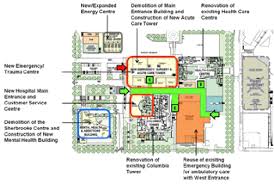
When planning for the area occupied by this circulation space (corridors) in the architectural space plan, it can be provided for as a percentage of the department area (usable, built-up area). This percentage will vary depending on the department and may also vary if the architect has any special feature in mind for that department which is not explicitly provided for in the room-by-room area Statement (such as semi-covered, landscaped waiting). The percentage can vary from 35% for an Operation Theater Suite (with 8’-0” corridors) to 20 — 25% for the Administration Department.
On the inpatient floors or even in the outpatient department, these corridors can be modulated by recessing pairs of doors that occur at regular intervals, and using an accent color in the niche so created. This helps relieve the boredom of walking through long, uninteresting corridors.
Very frequently the major circulation paths through the hospital are laid out even before the tentative space allocation for the hospital departments is done. Thus, the importance of conceptualizing these paths in a way that they contribute to the concept and functional layout of the hospital is not to be underestimated, the exercise should not be done casually.
Frequently the manner in which the healthcare architect conceptualizes the working (and therefore layout) of certain hospital departments, notably the Operation Theater Suite and the Radiology & Imaging Sciences Department will determine the circulation pattern through that department, and hence affect the layout of circulation paths in contiguous areas of the hospital.
 On the left is a plan of one of the lower (podium) floors of the Asian Heart Institute & Research Center, a dedicated cardiac care hospital | have designed, at the Bandra-Kurla Complex, an upcoming commercial hub in Mumbai (Bombay), India. It is a fairly good example of a “tight” circulation pattern, achieved by “looping” the corridor as shown by the thick line. This has obvious advantages over the ‘alphabet architecture’ that is the hallmark of most Indian hospitals, ‘U’s, ‘H’s and ‘E’s!
On the left is a plan of one of the lower (podium) floors of the Asian Heart Institute & Research Center, a dedicated cardiac care hospital | have designed, at the Bandra-Kurla Complex, an upcoming commercial hub in Mumbai (Bombay), India. It is a fairly good example of a “tight” circulation pattern, achieved by “looping” the corridor as shown by the thick line. This has obvious advantages over the ‘alphabet architecture’ that is the hallmark of most Indian hospitals, ‘U’s, ‘H’s and ‘E’s!
Below is the plan of one of the inpatient floors of the same hospital, showing the advantages of “shorting” the loop.
Frequently we healthcare architects find that in the areas below 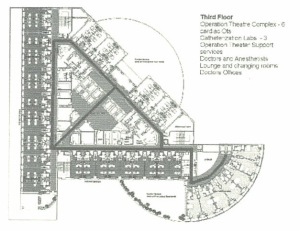 the footprint of the inpatient tower in the podium, we end up using the same corridors that we used in the inpatient floors. (I find myself doing this quite often. There must be a good reason for this; at least | hope there is! Beats me if | can think of it though. Maybe you can think of one.) Taking the easy way out? Aaaaahh…lets not let the laymen know!
the footprint of the inpatient tower in the podium, we end up using the same corridors that we used in the inpatient floors. (I find myself doing this quite often. There must be a good reason for this; at least | hope there is! Beats me if | can think of it though. Maybe you can think of one.) Taking the easy way out? Aaaaahh…lets not let the laymen know!
Defining major circulation paths through the proposed and future buildings is a design decision that will considerably impact the form, layout and thus the eventual functioning of the healthcare facility being designed. Do it thoughtfully and with conceptual clarity.
The importance of quality wayfinding for healthcare facilities
Wayfinding Blackpool Victoria Hospital
Your Life Is Now – John Mellencamp

0 thoughts on “Circulation: A Critical Issue – Conceptual Clarity and Ease of Wayfinding”